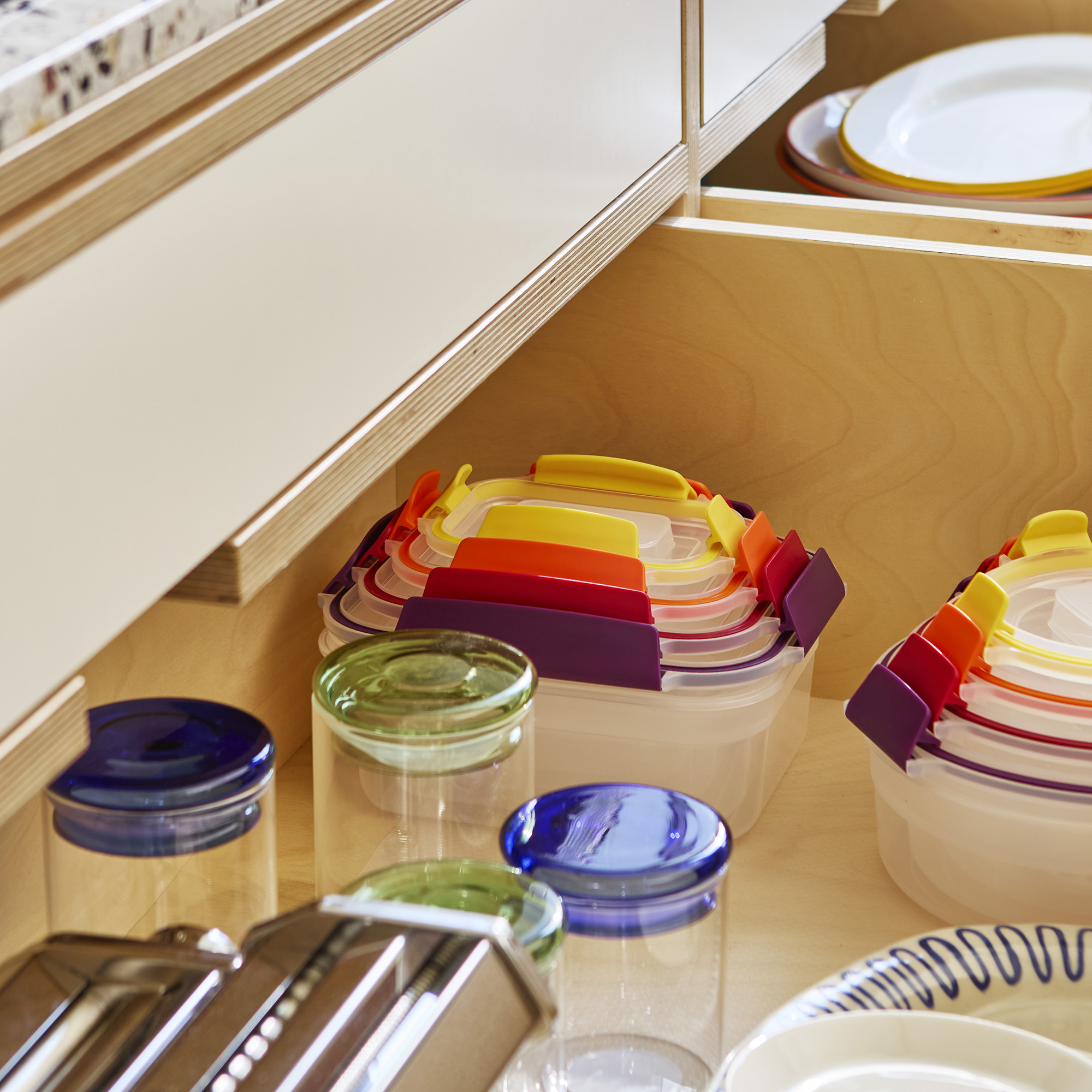
'Tis the season for decluttering, and we're just about ready to tackle one of the most terrifying cupboards of all: the food containers.
Figuring out how to organise food containers in a kitchen is a job that we all put off. If you're anything like me, you throw it in and quickly close the door, hoping for the best. However, finding kitchen storage ideas that help to organise food containers in a way that makes them easy to find and store make life much simpler.
We asked kitchen experts exactly how to tackle this tricky storage conundrum so that your food containers are right on hand for daily use, and your cupboards neatly ordered.
1. First, declutter
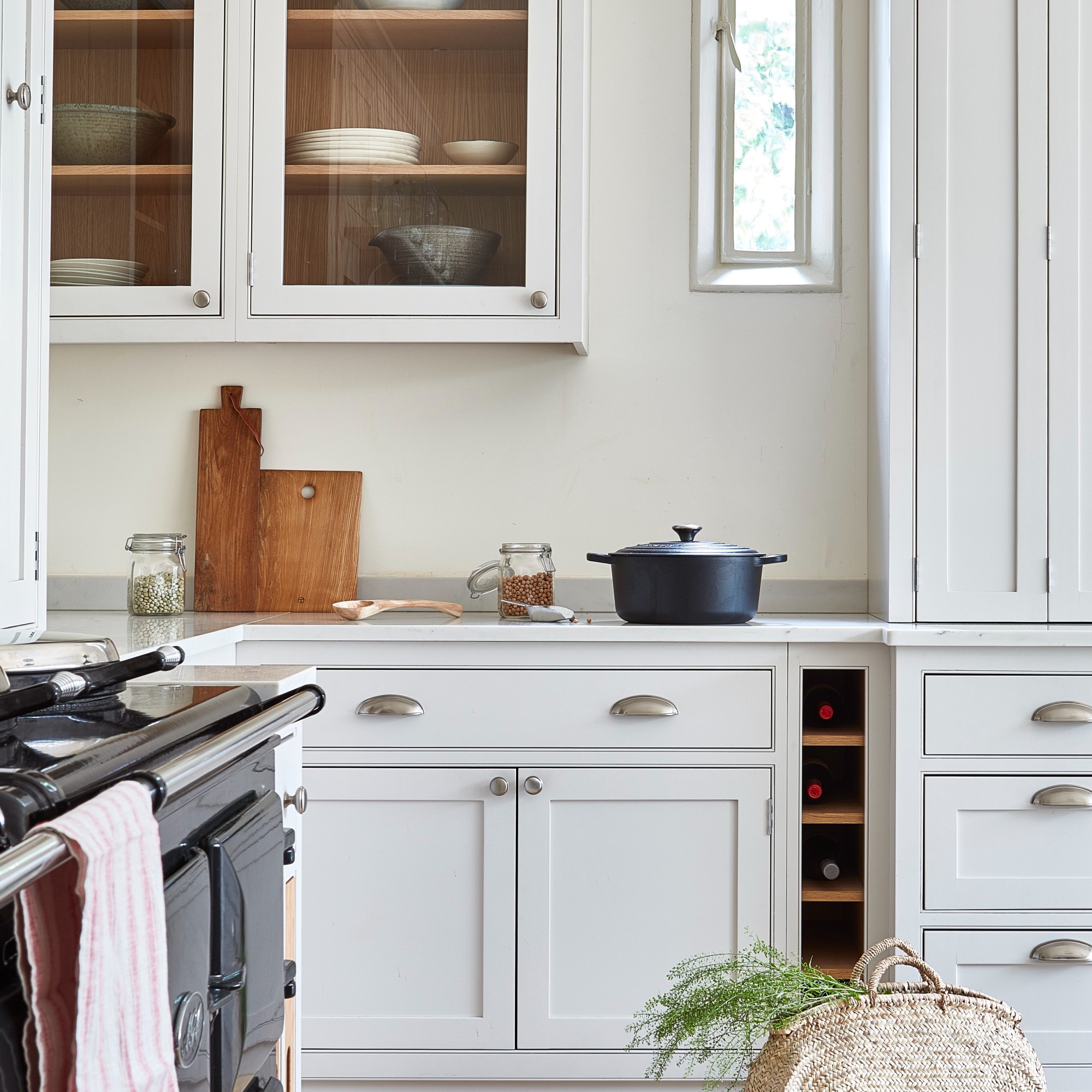
If your food container cupboard is as bad as mine, chances are you have a plethora of tubs without matching lids, random takeaway containers and stained storage past their best.
So, before you start organising, it's time to declutter. If there are tubs or lids with no counterpart then they have to go, as well as any spag bol-stained containers that can't be redeemed.
'To start, ask yourself how many of those food storage boxes or left-over takeaway boxes you really need and use on a regular basis. Keeping it to the essentials will allow for easier organisation and more room for extra kitchenware needed in the cupboard or deep pan drawers,' adds Al Bruce, founder of Olive & Barr.
Regularly decluttering your kitchen is the secret to making it easy to navigate on a daily basis, and spring is the perfect time to do so.
2. Make use of internal storage solutions
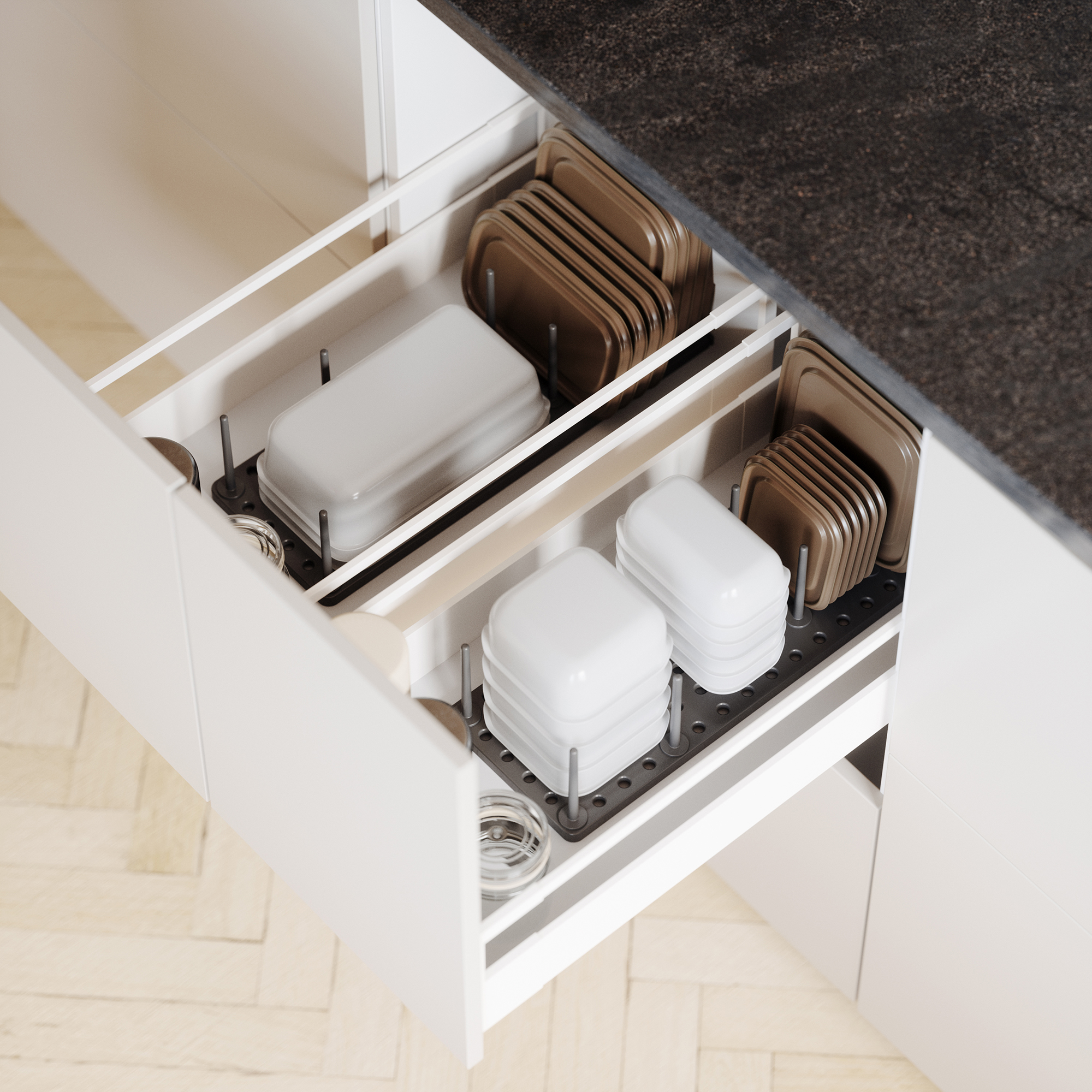
No matter how organised you profess to be, it's much harder to keep food containers in order when you don't have the internal storage solutions to match.
Cupboards and deep drawers very quickly become dumping grounds for food containers. The throw-in and close-the-door quickly method works well when you're in a pinch but not long term.
Instead, make sure you have baskets or purpose-designed racks for storing the containers and their respective lids. 'Position your containers on a sturdy, low-level shelf or in a drawer, ideally using vertical dividers to prevent shifting. When stacking on open shelves, place heavier containers at the bottom and lighter ones on top,' adds Jo Booth, brand manager at Kilner.
This Joseph Joseph storage system is designed for baking trays but will work just as well with food container lids.
This storage system is perfect for a deep drawer - the prongs allow you flexibility in stacking and positioning lids and tubs separately.
Drawer dividers are a handy solution that offer complete customisation of your storage - you can simply adjust to however much space you need. These bamboo dividers look chic to match.
3. Keep lids stored separately
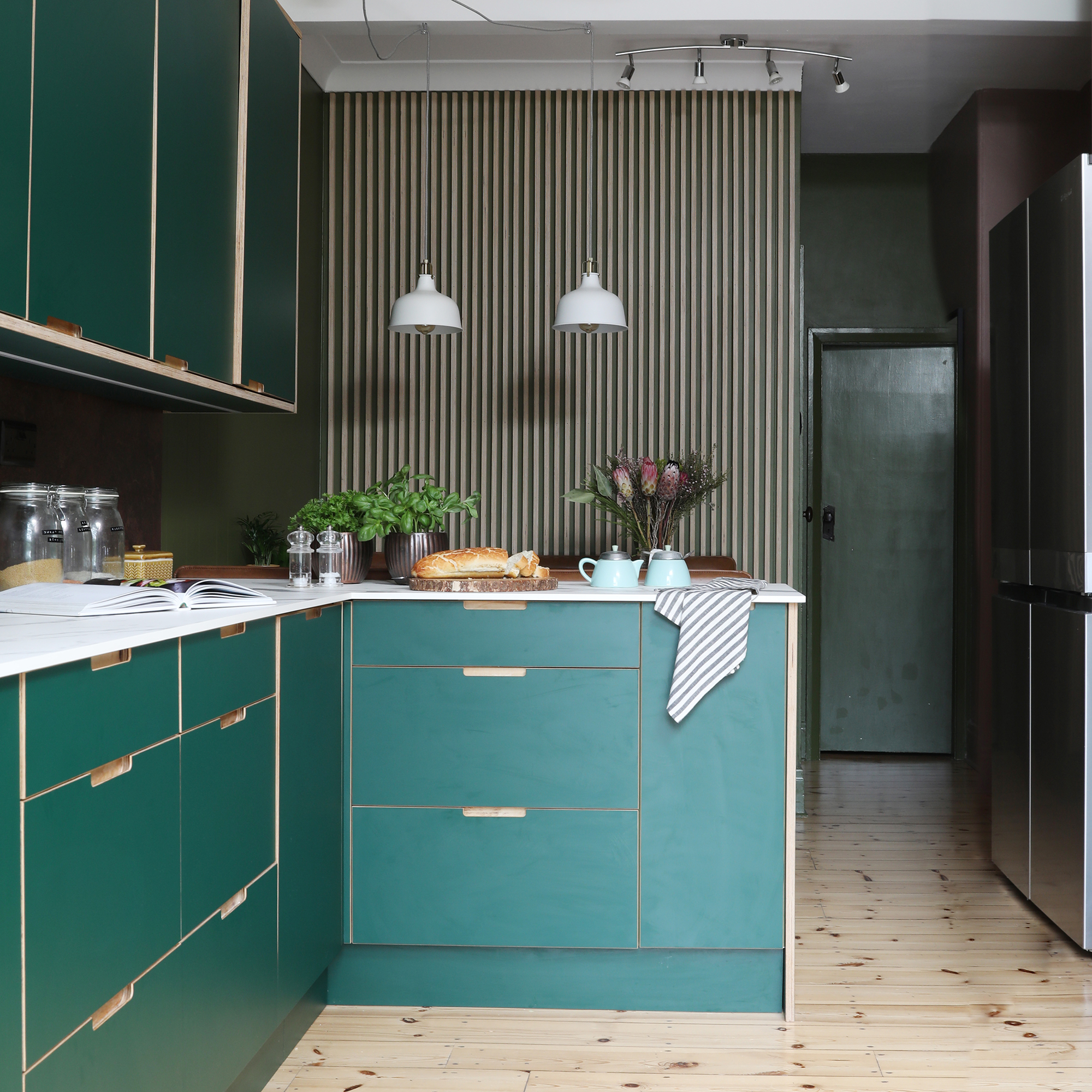
One method I have borrowed from my family is to keep food container lids in an entirely different cupboard or drawer. Finding a big enough cupboard can be tricky and keeping both in one can make it messy fast, so separating them out keeps everything more streamlined.
'Storing your containers in cupboards with limited space can be challenging,' echoes Jo from Kilner. 'To maximise space, nest smaller containers inside larger ones, using a soft liner, like a felt pad, between them to prevent scratching or cracking. Keep lids stored separately.'
If you don't have the room to store them separately, put them in different baskets to aid organisation.
4. Buy nesting food containers

Sometimes the issue lies not in your organisation, but in the actual products themselves. If you have lots of different brands of food containers in different sizes, it can be tricky to keep them neatly stored. Instead, opt for nesting designs from the same brand so they all fit nicely together.
'When it comes to organising food containers, efficiency and space-saving are essential. One of the most effective ways to achieve this is by creating a system that allows for stacking and storing containers in a way that minimises wasted space,' explains Richard Joseph, co-founder at Joseph Joseph.
'Our Nest™ Lock Food Container Set, for example, are expertly designed to seamlessly integrate into any kitchen or storage space. Designed with lockable lids that stack neatly, it makes organisation and space-saving both effortless and convenient.'
5. Choose moveable storage
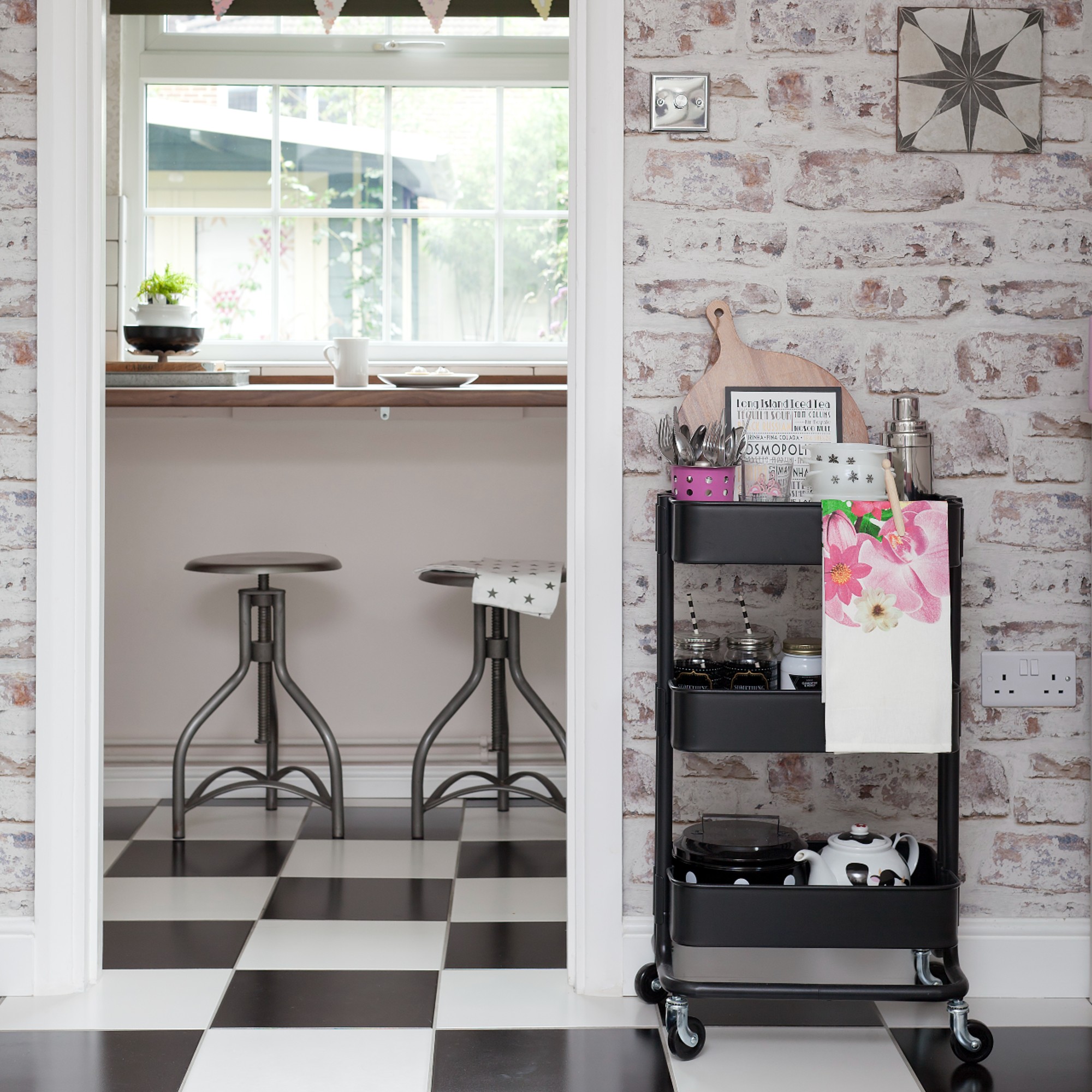
If you have a small kitchen where storage comes at a premium, you likely won't want to sacrifice an entire cupboard for your food containers.
Whether or not you have a drawer that you can use, if you find yourself needing to use your food containers on a daily basis then keeping them close by in a trolley, like the IKEA RASKOG will solve more than one problem.
A moveable trolley is a lifesaver in a kitchen big or small as it means you can move it out of the way when not in use, or create more storage by doubling up. Just make sure you neatly stack your food containers so that it looks tidy.
Organising food containers makes for the most satisfying weekend spring clean. Which method will you be choosing?
What has been the most effective method you've found of organising food containers in a kitchen?







